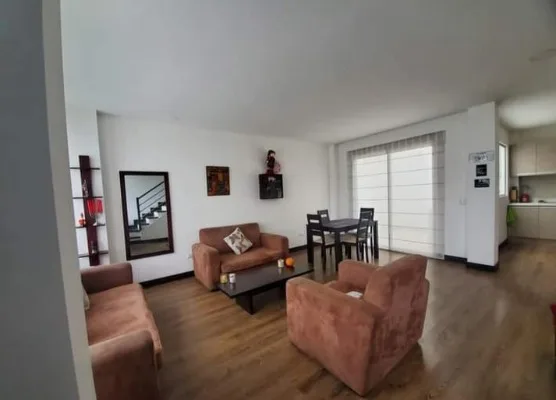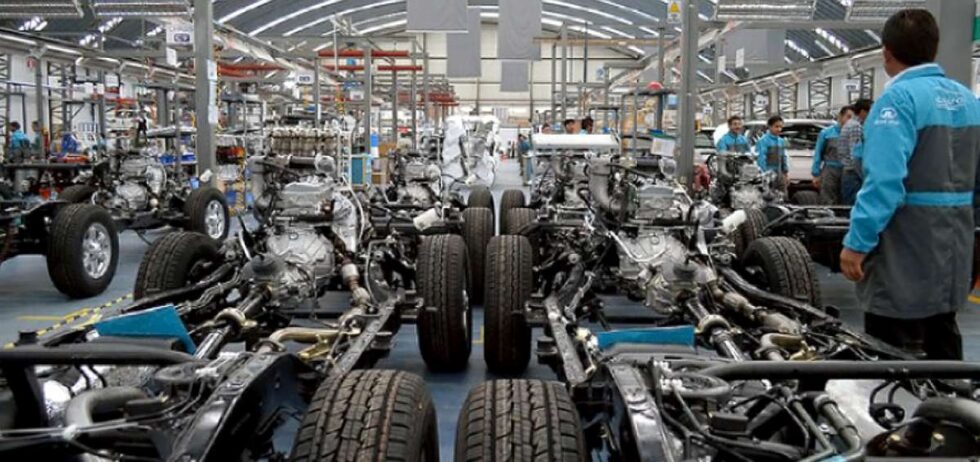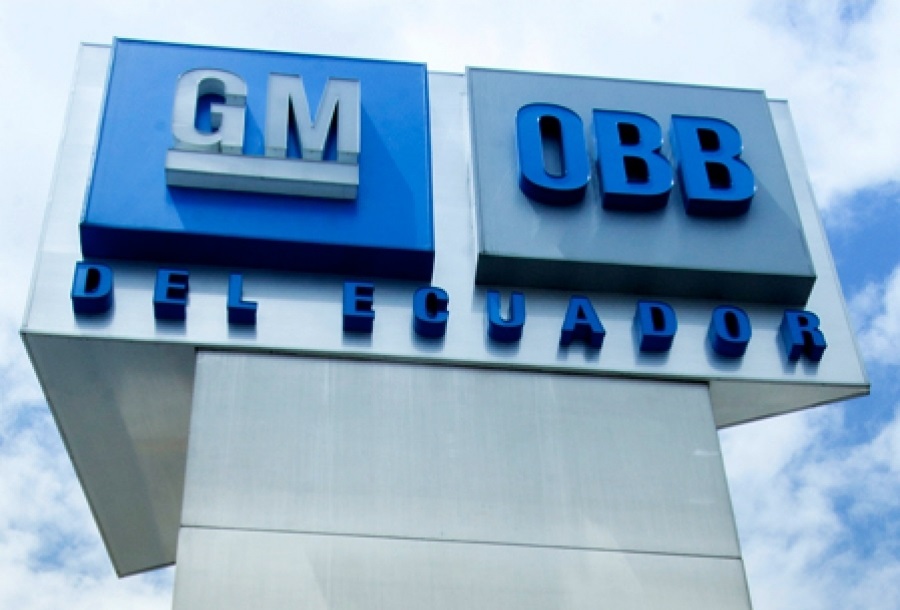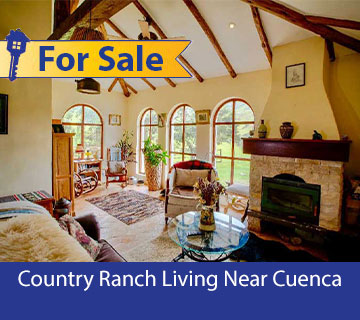Bicycle safety in Ecuador and beyond: Be safe but not afraid
By Jeff Van Pelt
I want to share some lessons I have learned about staying safe on a bicycle in my 10 years of riding in Ecuador, but first some background. Ecuador is a cyclist´s paradise. There are so many country roads, green pastures, mountain views, remote and interesting pueblos, seaside towns and beaches, and friendly people to meet.
Here are some of the sights you might encounter while biking in the country.

Boats on the beach in Anconcito

One of our biking routes on Santa Elena peninsula

View above Baños, Cuenca

Veiw on bike near Oña
Over my years here, my choice of bicycle has changed several times. First, I bought a Trek hybrid with no suspension. I quickly switched to a mountain bike with full suspension due to the condition of, especially, rural roads. The mountain bike was great for rough roads full of potholes and ruts, and even single track trails, but it got too heavy going uphill in the mountains as I got older.
Therefore, I bought a lightweight, carbon-fiber mountain bike. That was an improvement and would be a good choice for someone in good physical condition; however, a history of back injuries finally caught up with me and limited what I could do even with a lightweight bike. I then bought a very basic made-in-China electric bike. It was fine as transportation around the city; my back didn´t hurt while riding, and even felt better after a ride. However, that bike didn´t have enough power or torque for the mountains – I have learned that torque is even more important than the power rating when it comes to steep hills.

Specialized ebike
Therefore, finally, I bought my current bike – a full-suspension, Specialized, electric mountain bike with good hill-climbing ability. It allows me to get to some of the pretty places I used to hike in the mountains before back problems prevented that. And contrary to common belief, you can get plenty of healthy exercise on an ebike. This is especially true in the mountains, as you have to assist the motor by pedaling. You can also get more exercise by reducing the power setting and working harder.
Staying safe on a bike in Ecuador
I learned some of these lessons the hard way, and some vicariously. I hope that this article will help others to learn them the easy way and avoid an accident.
My two worst accidents on a bicycle were both going down high curbs, which abound in Cuenca.
- First, don´t brake hard while going rapidly down a high curbr, at least not using the front brake. It is easy to lock the front wheel when it is briefly off the ground. At the same time, more of your weight is forward and the rear tire has little traction. This can easily lead you to flip the bike and go head over handlebars. I learned this the hard way – I fractured my arm.
- Second, don´t go down a high curb at slow speed at an acute angle. Either wheel can be forced outward, away from the curb, and you will go down fast and hard. This was not so much of an issue on my heavy bike, but is more of a problem on a lightweight bike. I broke my collar bone and some ribs this way when the carbon-fiber bike was new to me.
- Third, don´t try to go up even a low curb or any kind of raised surface at an acute angle. The wheel can catch and cause you to lose your balance. I have gone down this way a few times, but fortunately didn´t get seriously hurt. Go up those inclines as close to a perpendicular angle as possible.
- Similarly, getting your wheel stuck in a rut or a drainage channel on a dirt road can throw you off balance. You probably won´t be able to cross them at the perpendicular, but take them at as obtuse of an angle as possible.
- When riding with others, keep a safe distance from them. Overlapping tires with another biker (i.e., where your front tire overlaps with their rear tire) is risky because if they veer toward you unexpectedly it will turn your front wheel and you will lose your balance and crash. Similarly, stay a safe stopping distance behind the next rider, and let them know, “on your left/right” when you are overtaking them. And beware of stopping suddenly when someone is following you closely.
- Going down a steep, gravel road is dangerous, as your wheels may not be able to get a grip in order to stop or slow you down. When you put on brakes and one or both of your wheels skids and causes you to lose your balance, you will go down. The risk is even worse on curves on a gravel road.
- I used to have lots of minor falls when I used toe clips and didn´t get my foot off the pedals fast enough when coming to a stop. I now use pedals with dull-tipped spikes (see photo) that keep your feet in place until you want to move them. They are like cleats in reverse – the spikes are on the pedal instead of on your shoe.

Pedal with spikes
- Redondels (aka traffic circles or roundabouts) are extremely dangerous. I tense up and my heart races whenever I have to go through a busy one of these. Often drivers are so intent on watching the car traffic that they don´t see bicycles. At times they will turn right in front of you and you will run into them if you are not aware and riding defensively. I know of two instances of cyclists being killed in redondels. It is a good strategy to think and ride as though you are invisible.
- Some bridges across the rivers are not much safer than redondels. Fortunately, I have observed a significant increase in courteous drivers in my years in Cuenca. Many will stop and motion cyclists or pedestrians to cross in front of them. I always give them a grateful thumbs up or a “gracias!” I think the new, colorful crossing markings on the street help to increase drivers´awareness.
- Cuenca has an extensive network of bike lanes (ciclovias) that make it safer than riding on busy streets. However, they can be dangerous when you are riding in the opposite direction of traffic on a one-way street. This is because drivers turning onto that street from either the left or right are often only looking in the direction from which they anticipate cars approaching. In these situations, stop and wait for cars turning onto the street you are on – unless the driver sees you and motions for you to proceed.
- One of most dangerous situations on a bicycle occurs when you are going fast into a downhill curve to the right. The problem is that if the curve is sharper, or the descent is steeper, than you anticipated, you could drift over the middle line and get hit by an oncoming car. Some drivers even ride the middle line around curves. And further, you don´t know what you might encounter directly in your path around the bend. Riding in Cajas National Park, I encountered a llama in a blind curve, but by then I had learned to go slowly into curves, and I was able to avoid it.
- Finally, the bane of existence for all cyclists is … aggressive dogs. Most dogs are all bark and no bite. However, some of them will come after you with a vengeance that looks like they would take a chunk out of your leg if they could. I have only been bitten twice, but had a couple of dogs come so close that I lost my balance and crashed trying to avoid them. In the United States a big lab-type dog bit me on the buttocks, breaking the skin. I later went to their door and embarassed the owner by showing her the bite. Another time, in Cuenca, a medium-sized dog clamped her teeth down on my foot, but I was pedaling so fast that she got a twisted neck before she could hurt me.
First, some things not to do when confronted with an aggressive dog or three:
Don´t speed up and try to outrun them – unless you are going downhill and have a good lead on them. And don´t shout or wave your hands around. Dogs´ instinct is to chase prey, so either of these reactions would be giving them what they want. A better strategy – and this may not sound logical – is to slow way down. It puts a damper on their chase. I haven´t figured out whether they stop because it´s boring when you are going super slowly, or that your absence of fear makes them nervous and unsure what you are going to do. On rare occasions, you might want to use either pepper spray or vinegar in a water bottle with a hole drilled in the top. Spraying them with either of these will deter dogs quickly and they will only bother you once. With vinegar you only have to get it close to them, as they hate the smell of it. I don´t know if this stops them from bothering all passersby, or only you, but I know two formerly aggressive dogs in Cuenca that give me plenty of space now.
Bicycling intrinsically involves a certain level of risk. However, you can manage the risks by how and where you choose to ride. Besides the bike lanes that abound in the city, there are myriad lonely, peaceful country roads within minutes of Cuenca.
I hope that these tips will help you ride safely and not miss out on the beauty and excitement that await cyclists all around Ecuador. Perhaps others will add their bicycle safety tips in the comments section.
Author’s note: I organize an e-biking group in and around Cuenca several times a week. We sometimes put the bikes on our trucks and drive to starting points further outside of town. We have also taken our bikes on road trips of a few days to a week, around southern Ecuador (Salinas, Vilcabamba, Oña). When I was younger (and had a healthy back) we did two multi-day, non-ebike trips down the Avenue of Volcanoes with the Biking Dutchman outfit out of Quito. We started at the snow lines of Cotopaxi and Chimborazo volcanoes, and at the Quilotoa crater lake, and road downhill to the nearest cities. And we rode with that group from Baños to the Amazon, which was mostly downhill. My point here is simply to show that there are endless, fabulous possibilities for cyclists in Ecuador.
If you have an electric bike and would like to join group rides around the Cuenca area, contact me on WhatsApp at 096 811 5719 or at jnvanpelt@gmail.com.
________________
Jeff Van Pelt earned his masters degree in social psychology from New York University and his doctorate in counseling psychology from the College of William and Mary in the United States. He has worked as a psychotherapist, wellness program consultant, and health and psychology writer. Jeff and his wife are retired and have lived in Cuenca since 2013.



















